Antique ceramics and weapons
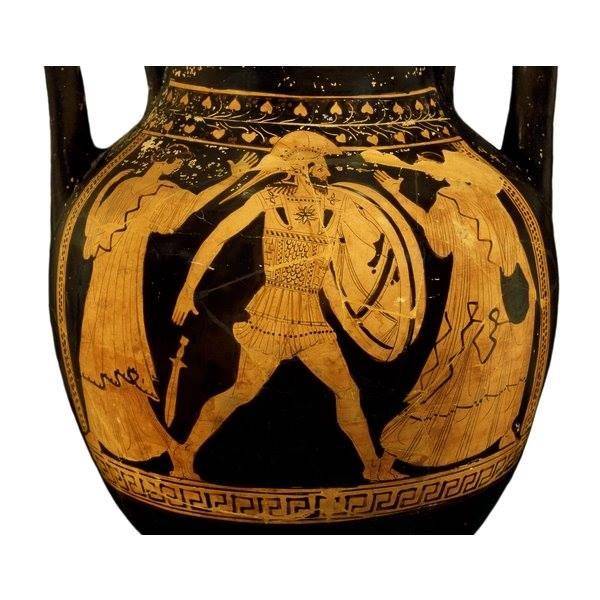
Very often, the painting depicted the heroes of the Trojan War. Here, for example, Menelaus, dressed in armor made of scales and with a large round shield-hoplon (Metropolitan Museum of Art, New York)
Book of the Prophet Jeremiah 18: 4)
Ancient civilization. In our cycle of acquaintance with ancient culture, three materials have already appeared: “Croatian Apoxyomen from under the water. Ancient civilization. Part 2 ", “Homer's poems as a historical source. Ancient civilization. Part 1 " и “Gold for war, the fourth wonder of the world and Ephesus marble”. Today we again turn to the topic of ancient culture, but let's talk about completely prosaic things, namely ... dishes.
For example, ancient Greek ceramic vessels came to us: amphoras, kiliks, kiafs ... On some figures are black, and the background is red. On others, the opposite is true! And they have a secret, which is that they do not fade, that is, the painting on them is so resistant that it is not afraid of millennia. How did the ancient masters achieve this? Well, and of course we are also interested in the drawings themselves. The themes of the mural are very different: from mythical scenes to the everyday life of the neighboring blacksmith. And, of course, many ceramic pieces of the ancient Greeks depict fighting warriors. Well, finds of artifacts (swords, armor, helmets) only confirm that those who painted all this saw it all with their own eyes. So ancient Greek ceramics is also an encyclopedia of weapons of the ancient Greeks!
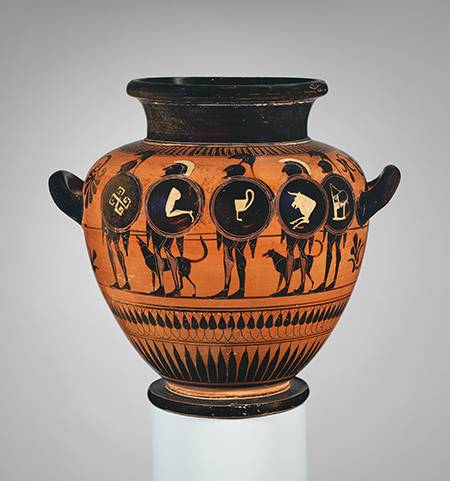
Stamnos of the VI century BC. On it we observe a variety of crests on the helmet of Greek warriors and an equally diverse painting of their shields, including the notorious image of a swastika. In fact, we have before us a ready-made set of figures of soldiers and packaging ready for them, or rather, an image on this packaging, which proves that you did not come up with anything
Historical detective
Ancient ceramics is nothing but historical detective: we ask "witnesses", that is, broken shards or whole vessels, and they are silent or ... answer. But, fortunately, the ceramic vessels of the ancient Greeks are so informative that we learn a lot of interesting things from them, simply by carefully examining them. However, for starters, before we do this, let's find out the most important thing: from what and how the Greeks made their dishes, namely: bowls, goblets, dishes, their famous amforms, etc.
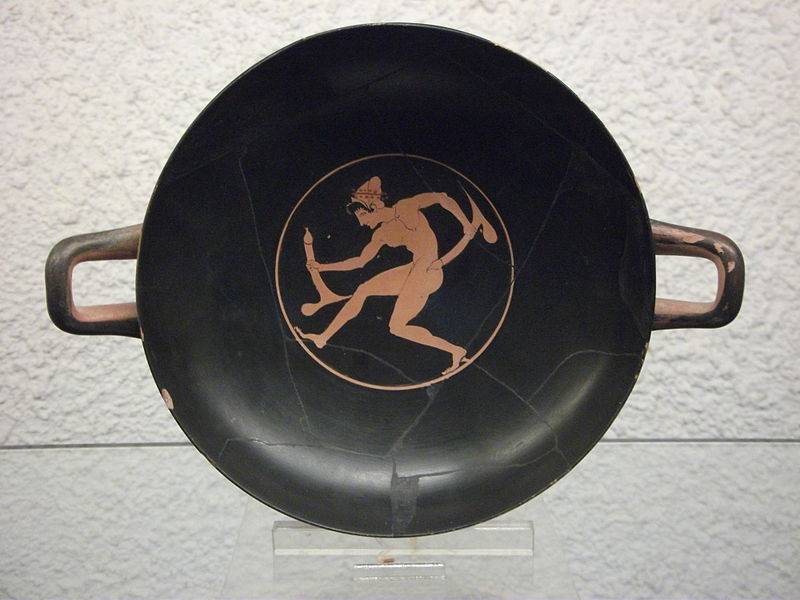
But this find is very interesting, although there is no warrior on it. Before us is a cilic from the archaeological museum in Cerveteri. It is an ancient city in central Italy, in the Lazio region. In ancient times, it was a city-state of the Etruscans and was called Caisra, then Ceres, or Ceres. He was a member of the Etruscan Union. Cerveteri Necropolises are known for their rich burials and are included in the UNESCO World Heritage List. As you can see, already then there were "substitutes for men", which the soldiers left for their wives, leaving for a long time on campaigns. Only the material was clearly not silicone
Clay is the head of everything!
So from what? Most of all, clay (although dishes were also made of metals: bronze, silver or gold; and later - even glass). Clay in Greece was everywhere, and everywhere it was a little different - from light red, almost yellow, to dark brown. Very good quality clay was mined in Attica, near Athens. In Greek, clay is keramos, and it is easy to guess that clay products were called (and are still called) ceramics, and the craftsmen who made them and make them are called ceramists. Even the quarter in Athens, where they worked, was called Keramik.
However, this material, that is, clay, needed preparation. It was just so easy to dig up clay in a pit, stretch it and sculpt pots! First of all, it was soaked in larger tanks, and even small stone pools. In this case, all sorts of light impurities floated and were removed. Then the clay was dried to remove excess water.
Who could spin a potter's wheel?
After this, clay was collected, dried again, and using a potter’s wheel, which could be both stone and wooden, this or that vessel was made. Since the circle was heavy, he was turned by a slave or apprentice, and the master himself paid attention exclusively to the creative process. Only later came up with a device in order to twist his feet. And labor productivity immediately increased dramatically. If the vessel consisted of several parts, then they were made separately and connected until they were dry. They tried to make the surface of the vessel smooth, for which they wiped it with a damp cloth or sea sponge, and the dried surface was again polished by rubbing with pieces of bone, stone or wood. An amphora or vase turned out to be more beautiful if the potter made the color of the clay itself more vivid. For example, he covered the surface with red ocher diluted in water, and it was absorbed into the clay. Then the vessels were dried in the shade so that they would not crack under the direct rays of the sun from uneven heating. Drafts were avoided for the same reason. So the workshop of the Greek potter was supposed to be quite spacious ... "home ownership."
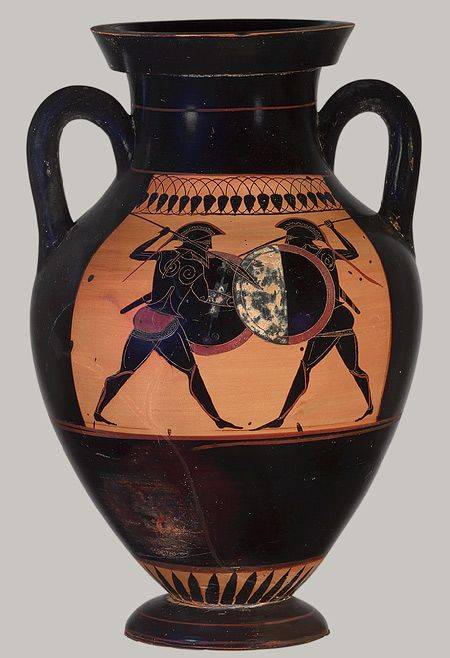
Classic black-figure amphora with two fighting warriors (Metropolitan Museum of Art, New York)
The birth of one vessel is the work of many hands!
Now it was possible to proceed directly to the painting of the finished vessel itself. But it was no longer the potter who was engaged in this, but the vase painter to whom he transferred his work. He made a sketch of the future drawing with a pointed wand, a lead pencil on the still completely dry surface of the vessel, so that it still had not to be dried. That is, the state of the vessels was required to be monitored continuously, and as some vessels dried and painted, immediately do others so that the drying and painting process was coordinated. The outline of the figures was outlined with a thin brush, and a compass was used to draw a round shield to the warrior.
Black and red, red and black ...
Interestingly, most of the Greek vessels were painted with just two colors - red and black, although white and pink were also used. Moreover, the red paint was the same red clay, but black, although this one seems surprising, was also red clay, but only it was a little different in quality. And she blackened only during firing in the oven. So, the paint, which in reality was only clay with only a slightly darker shade, compared to the one from which the vessel itself was made, was applied by the artist, and this was another of his important skills - to distinguish insignificant shades in the color of clay well, it became only after firing either black or red. Hence the name of the ceramics: black-figured and red-figured. The first means that the figures on the vase are painted over with “black paint,” the second means that the space around the figures is covered with black paint, and they themselves are left in the color of red clay. The vase painter either scratched out small details with a special sharp tool, or painted with a thin brush. In this case, purple, white, gray, pink and some other colors were used.
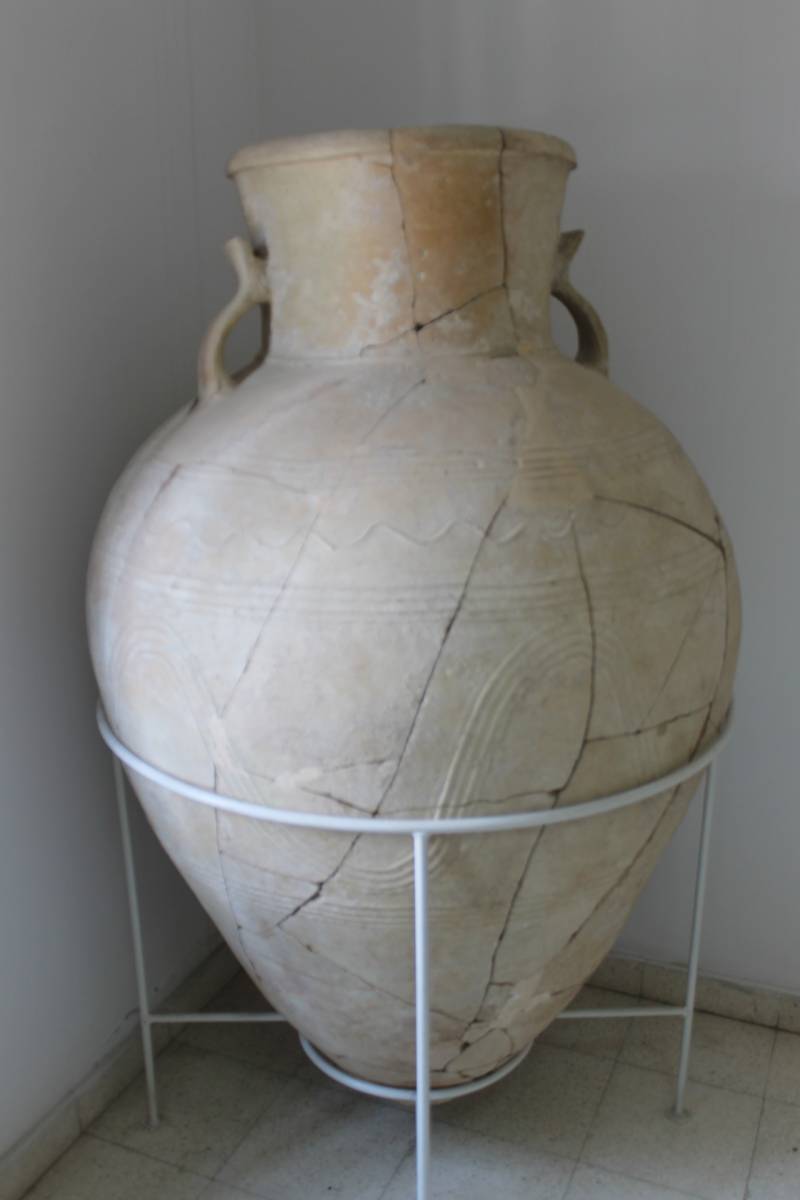
A jug for grain and ... was it worth it to paint beautifully? (Archaeological Museum in Larnaca, Cyprus)
Accordingly, they were also obtained by mixing white, red and black clay. The masters knew that if you make black paint a little more liquid, then when fired, you can get a rich brownish tint, well transmitting the color of the hair. Well, the dried painting was polished again, and the work was completed by writing inscriptions, for example, the names of the characters depicted.
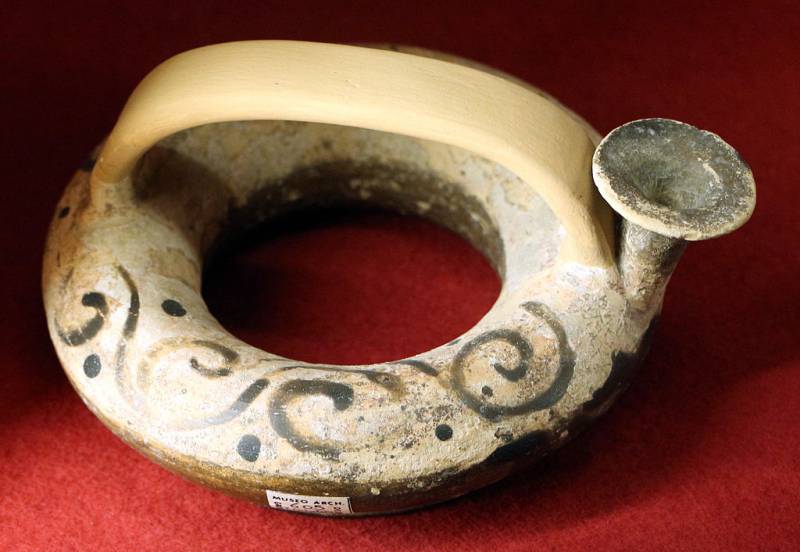
Ancient household ceramics was the most diverse. For example, Etruscan askos - a vessel for storing oils and refueling oil lamps (Archaeological and Art Museum of Maremma, the city of Grosseto, Italy)
The biggest secret is in the oven!
Now, almost the most important thing remained - firing. To do this, the workshop had a special oven, where painted dishes were placed, and where free access for air was open, and the temperature gradually increased to 800 °. At the same time, all products that were in the furnace turned red. But then the furnace was closed so that the air no longer got into it, wet firewood or wet straw was added to the fuel, and the temperature was raised to 950 °. Now, on the contrary, the dishes blackened, but not entirely, but only in those places that were painted with “black paint”. Now it was necessary to preserve this color, for which more firewood was put into the stove, the former temperature was maintained for some time, and then it was opened for air access. The temperature was dropping a little. But if the master accidentally shifted firewood, and the temperature in the furnace rose to 1050 °, then the black color again turned red. These are the most complicated chemical processes that occurred at that time with iron oxide contained in clay when it reacted with carbon dioxide released during the burning of raw firewood. And the question is: how did the ancient Greek potters determine the right temperature? Most likely by eye, by the shade of the flame. In any case, one thing is clear: they were very high-class professionals and had vast experience. Well, they also relied on the help of the gods, for example, the goddess Athena, the patroness of crafts. Although we know one thing for sure: they needed ... a lot of firewood! Just really!
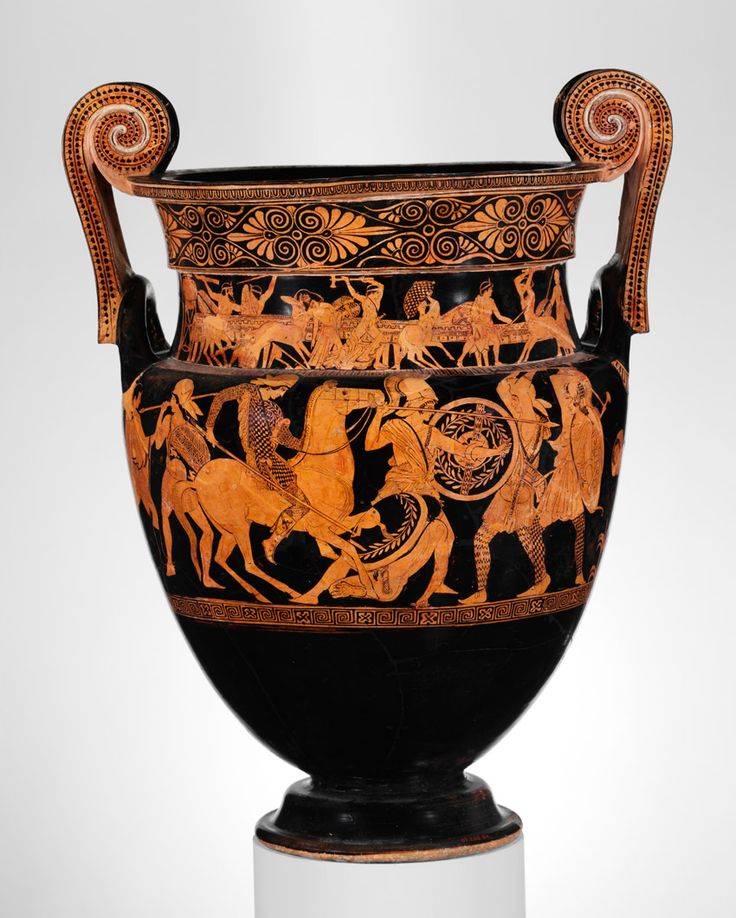
And here, on the contrary, we see a red-figure vessel, where there are riders, and infantrymen, and chariots ... Take it, Angus McBride or Giuseppe Rava, and ... draw your warriors on it
Whose skill was superior?
Naturally, the masters were proud of their products, and therefore they were signed. True, considering amazing black and red figure vases, we admire the talent of vase painters more often than we remember how it was not easy to fashion and burn them. Apparently, anticipating this, it was the potters who, as a rule (namely, they were the owners of the workshops), left their names on the items more often, although many of them were not preserved. They didn’t survive because they reached us ... in tiny fragments.
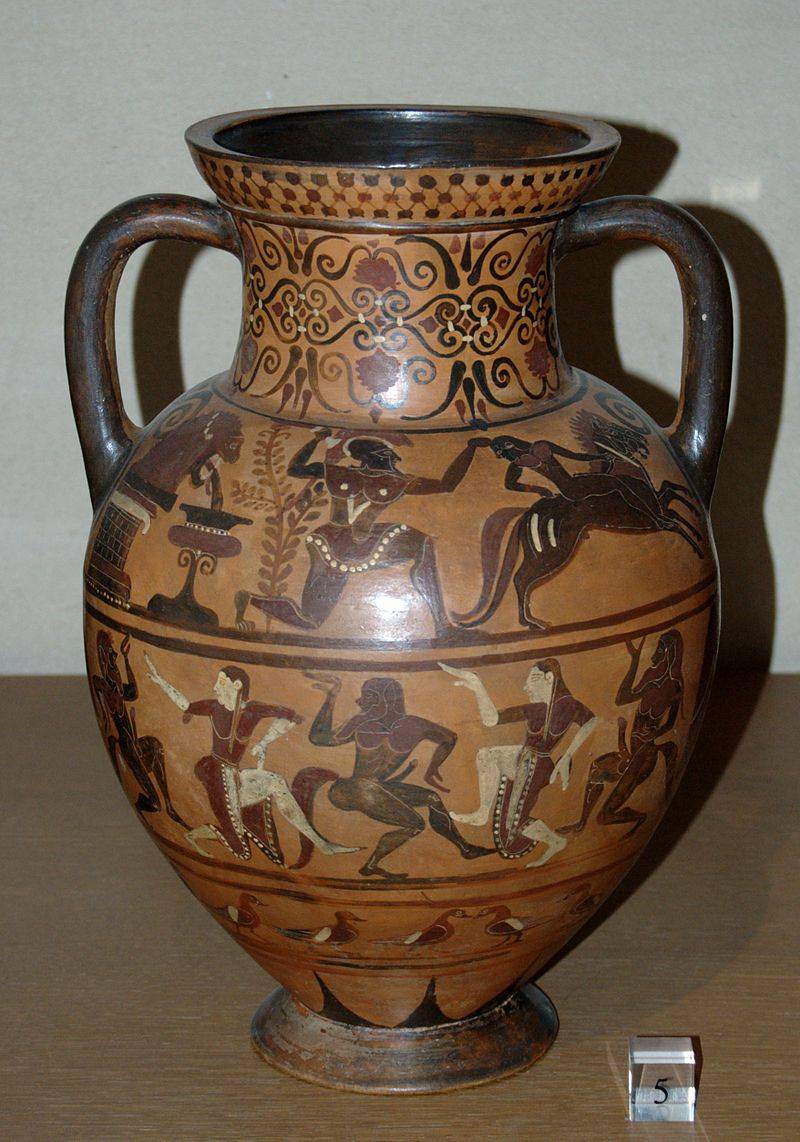
Etruscan Amphora, Louvre Museum. Here, too, some obscenities we see. Obviously, that was their life. Rich in all kinds of sexual fantasies ...
Nothing lasts forever, much less pottery, which at times, dedicating to the gods, was specially broken. The vase could be preserved as a whole, if only it was honored to accompany a person to the afterlife and if the grave was not robbed by ancient or later treasure hunters. So, in the XIX century. in the tombs of one of the most ancient peoples of Italy - the Etruscans, who believed in the afterlife and sought to equip it in the best and most pleasant way, they found a huge number of whole painted vases brought back in the VI-V centuries. BC e. from Greece. And although most of them were made in Attica, in Athens, they are still in the XIX century. called "Etruscan" because most of them were found in Etruscan tombs.
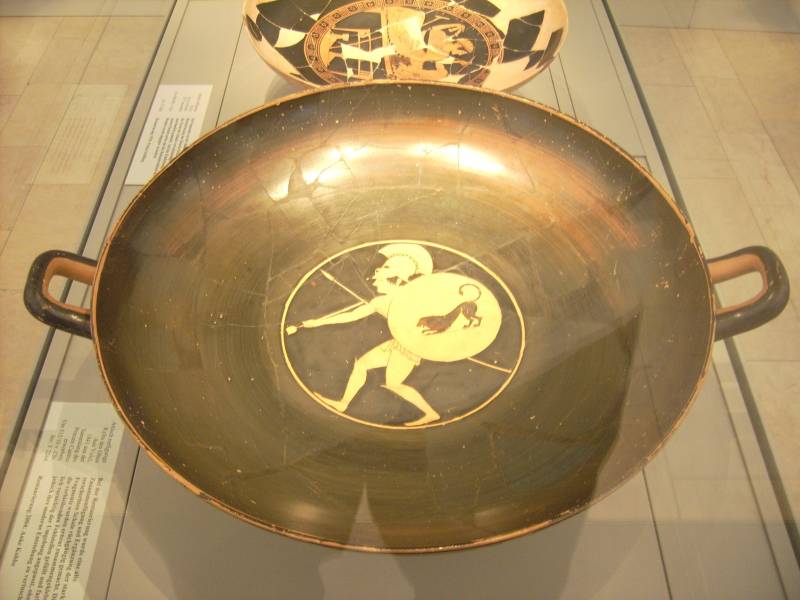
Another image of an antique warrior with a painted shield at the bottom of a kilik. ("Old Museum" - Art Museum in Berlin on Museum Island)
By the way, Etruscan ceramics itself is quite different from Greek, so they can not be confused. The Greek is more complete, "perfect", so to speak, but the Etruscan vessels are painted as if their creators were in a hurry. In addition, many vessels are completely black, and the drawings on them are scratched!
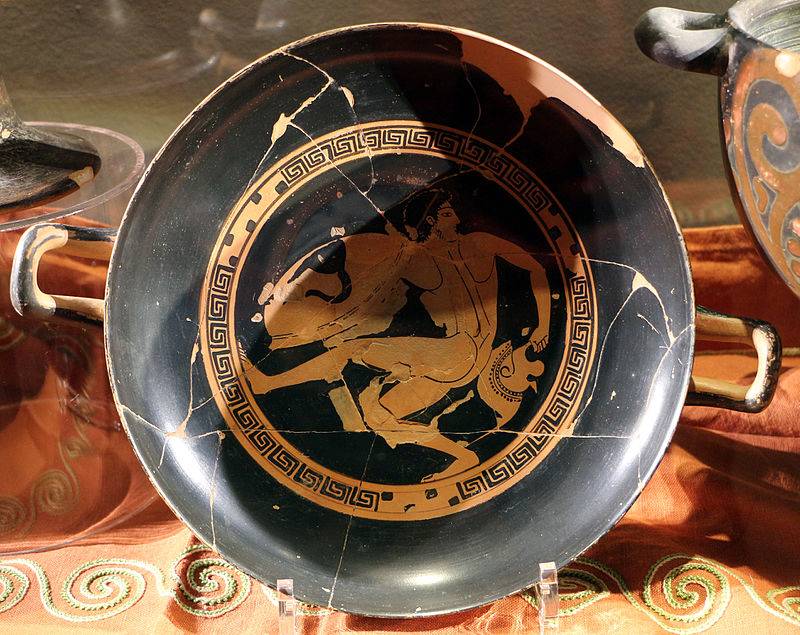
Cracked but glued red-figure kilik with the image of a runner at the Olympic Games. There was a contest - running in armor, which was a shield and helmet. Typical Attic red-figure ceramics, 480-470 BC. (Archaeological and Art Museum of Maremma, city of Grosseto, Italy)
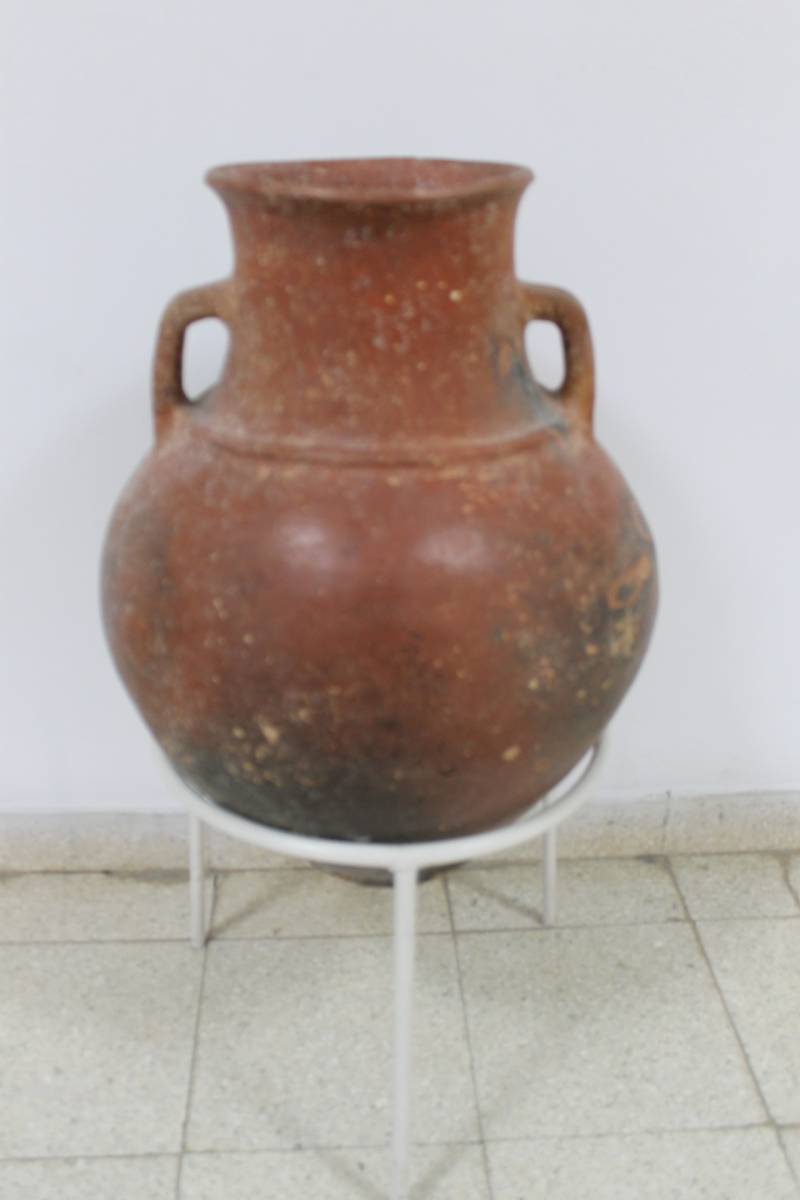
Information